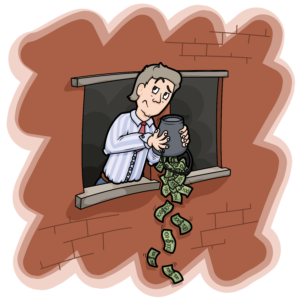In a previous article we talked about loans versus leases, now we will talk about the cost to factoring your invoices. I am including a calculator to help you determine what your Annual Percentage Rate (APR) is on the transaction.
Because factor financing is short term (usually 30-45 days), you will not see an annualized percentage rate (“APR”) published. However, you should know the true cost of your periodic factoring, which reflects the money you are being charged by the Factor relative to the money that was advanced to you.
To calculate the true cost of factoring, you need to have three pieces of information:
Advance rate: The percentage (%) of the face value amount of accounts receivable the Factor will advance to you.
Example: $10,000 (A/R) x 80% advance rate = $8,000 (Advance)
Discount rate (or factoring fee): The percentage (%) of the face value amount of accounts receivable the Factor will charge you for processing these receivables for an agreed upon term.
Example: $10,000 (A/R) x 3% discount rate (for 30 days) = $300 (Discount Fee).
Term: The number of days your advance remains outstanding. The discount fee increases for each day your receivable remains outstanding past the agreed upon term.
Using the example information, you can calculate the true cost of factoring. Your annual interest rate appears to be 36% based on the discount fee of 3% for 30 days. However, when you consider that you only received $8,000 not $10,000, your APR is actually 45% (and even higher if your receivables take longer than 30 days to pay). Make sure to use this APR to compare factoring to other financing options that may be available to you.
To calculate your true factoring cost, utilize the calculator below.
How to Calculate Factoring Cost

What are the alternatives to factoring?
First businesses can apply for traditional bank and credit union lines of credit. Unfortunately, when you are new in business, this may not be a viable option. All is not lost, another option available to small business owners with receivables in need of working capital may be eligible for financing from community lenders, such as Community Development Financial Institutions (“CDFIs”). CDFIs are primarily non-profit organizations that have access to lower cost community and economic development loan funds to provide smaller dollar amount loans to business owners who do not meet conventional banking criteria. Many CDFIs are also “Community Advantage” lenders that offer SBA loans up to $250,000. The U.S. SBA is the largest funding source for small businesses in the United States. The APR on CDFI and SBA financing is significantly lower than it is for factor financing!
Conclusion
If you are a small business owner in need of business working capital, avoid the high cost associated with financing products such as factoring, merchant cash advance, and typical online loans by exploring alternative, lower cost financing options available through your local CDFI. Ask us for an introduction to a non-profit who is helping businesses get ready for SBA funding!


Awesome post! Keep up the great work! 🙂